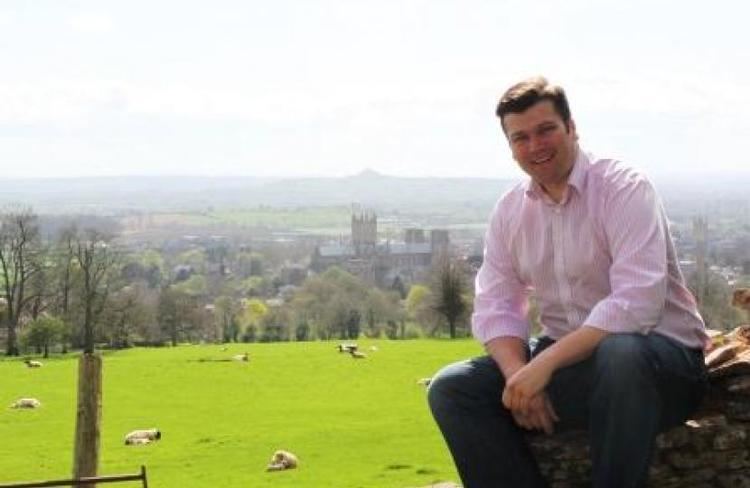County Somerset Number of members One Type of constituency Borough constituency Party Conservative Party Electorate 79,989 (December 2010) | Created 1885 Number of members Two Member of parliament James Heappey European Parliament constituency South West England | |
 | ||
Wells uk parliament constituency
Wells is a constituency represented in the House of Commons of the UK Parliament since 2015 by James Heappey, of the Conservative Party (UK).
Contents
- Wells uk parliament constituency
- History
- Boundaries
- Constituency profile
- Elections in the 1930s
- Elections in the 1910s
- References
History
The original two-member borough constituency was created in 1295, and abolished by the Reform Act 1867 with effect from the 1868 general election. Its revival saw a more comparable size of electorate across the country and across Somerset, with a large swathe of the county covered by this new seat, under the plans of the third Reform Act and the connected Redistribution of Seats Act 1885 which was enacted the following year.
The seat was largely Conservative-held during the 20th century and has not seen a Labour MP in its history. The only other party to have been represented is the Liberal Democrats or their predecessor, the Liberal Party, who achieved a marginal victory in 2010, see marginal seat.
Sir William Hayter was chief government whip of the Commons under three Liberal Prime Ministers governing from the Lords, (Lord John) Russell, Aberdeen and Palmerston.
So too in this role was Lord Hylton from 1916 until 1922 alongside the Lord Colebrooke in the Conservative-Liberal National coalition.
Robert Sanders was Deputy Chief Whip in the House of Commons, 1918–1919, and Minister of Agriculture and Fisheries, 1922-1924.
Robert Boscawen was a government whip (1988-1989).
David Heathcoat-Amory was Minister for Europe (1993-1994) and later a Shadow Cabinet member (1997-2001).
Boundaries
1885-1918: The Municipal Borough of Wells, and the Sessional Divisions of Axbridge and Wells (except the civil parish of Binegar).
1918-1950: The Municipal Boroughs of Glastonbury and Wells, the Urban Districts of Shepton Mallet and Street, the Rural Districts of Shepton Mallet, Wells, and Wincanton, and in the Rural District of Frome the civil parishes of Cloford, Marston Bigot, Nunney, Wanstrow, Whatley, and Witharn Friary.
1950-1983: The Municipal Boroughs of Glastonbury and Wells, the Urban Districts of Frome, Shepton Mallet, and Street, and the Rural Districts of Frome, Shepton Mallet, Wells, and Wincanton.
1983-2010: The District of Mendip wards of Ashwick, Avalon, Chilcompton and Ston Easton, Ebbor, Glastonbury St Benedict's, Glastonbury St Edmund's, Glastonbury St John's, Glastonbury St Mary's, Moor, Nedge, Pylcombe, Rodney, Sheppey, Shepton Mallet, Street North, Street South, Wells Central, Wells St Cuthbert's, and Wells St Thomas, and the District of Sedgemoor wards of Axbridge, Axe Vale, Berrow, Brent, Burnham North, Burnham South, Cheddar, Highbridge, Mark, Shipham, and Wedmore.
2010–present: The District of Mendip wards of Ashwick and Ston Easton, Avalon, Chilcompton, Glastonbury St Benedict’s, Glastonbury St Edmund’s, Glastonbury St John’s, Glastonbury St Mary’s, Knowle, Moor, Nedge, Pylcombe, Rodney and Priddy, St Cuthbert Out North and West, Shepton East, Shepton West, Street North, Street South, Street West, Wells Central, Wells St Cuthbert’s, and Wells St Thomas, and the District of Sedgemoor wards of Axbridge, Axe Vale, Berrow, Brent North, Burnham North, Burnham South, Cheddar and Shipham, Highbridge, Knoll, and Wedmore and Mark.
Constituency profile
Aside from energy, transportation, retail and distribution which are major sectors, agriculture and tourism are still important areas to this central and quite quintessential part of Somerset which includes the coastal resort of Burnham-on-Sea, the city of Wells with its cathedral, and notable natural landmarks such as the Cheddar Gorge and Glastonbury Tor.
Workless claimants who were registered jobseekers were in November 2012 significantly lower than the national average of 3.8%, at 2.1% of the population based on a statistical compilation by The Guardian.
Elections in the 1930s
General Election 1939/40: Another general election was required to take place before the end of 1940. The political parties had been making preparations for an election to take place and by the Autumn of 1939, the following candidates had been selected;
Elections in the 1910s
General Election 1914/15:
Another General Election was required to take place before the end of 1915. The political parties had been making preparations for an election to take place and by the July 1914, the following candidates had been selected;
